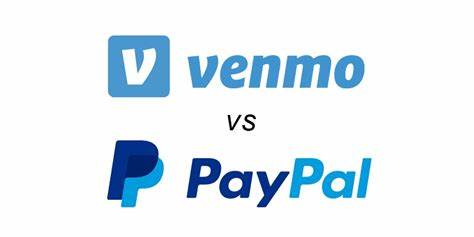In the world of digital payments, Venmo and PayPal have emerged as two of the most popular and widely used platforms. Both owned by PayPal Holdings Inc., these platforms offer users convenient ways to send and receive money, make purchases, and manage their finances digitally. In this article, we’ll conduct a thorough comparison of venmo vs paypal, highlighting their features, differences, and use cases to help you choose the one that best fits your needs.
Contents
Ownership and History
- Venmo: Acquired by PayPal in 2013, Venmo was originally founded in 2009 as a peer-to-peer payment app focused on simplicity and social interactions.
- PayPal: Established in 1998, PayPal has a longer history and has grown to become one of the world’s leading digital payment platforms, offering a wide range of services beyond peer-to-peer payments.
User Interface and Experience
- Venmo: Known for its social feed and emojis, Venmo provides a more casual and socially engaging experience. Users often share payment descriptions and interact with friends’ transactions.
- PayPal: PayPal’s interface is more business-oriented, offering a professional look and feel. While it does offer a social feed option, its primary focus is on transactions.
Transaction Speed and Instant Transfers
- Venmo: Venmo offers instant transfers to linked bank accounts or debit cards for a fee. These transfers typically occur within minutes, providing quick access to funds..
- PayPal: PayPal also provides instant transfers, known as Instant Transfers, to eligible bank accounts or debit cards. However, this feature may not be available to all users and may come with associated fees.
Fees
- Venmo: Sending money from a linked bank account or debit card is usually free. There are fees for instant transfers and credit card payments, as well as fees for certain business-related transactions.
- PayPal: Fees vary based on transaction types and currency conversions. While personal transfers within the same country are typically free, there are fees for cross-border transactions and credit card payments.
International Use
- Venmo: As of my last knowledge update in September 2021, Venmo is primarily available for users in the United States. International use is limited.
- PayPal: PayPal is available in over 200 countries and supports multiple currencies, making it a more suitable option for international transactions.
Security
- Both platforms employ security measures such as encryption and two-factor authentication to protect user information and transactions.
Business Use
- PayPal: Widely used for e-commerce, PayPal offers business solutions, invoicing, and integrations for merchants.
- Venmo: While primarily focused on peer-to-peer transactions, Venmo is exploring options for business accounts and solutions.
In the Venmo vs. PayPal comparison, both platforms offer unique features and advantages. Venmo’s social interaction and ease of use make it a popular choice for casual peer-to-peer transactions among friends. On the other hand, PayPal’s global reach, versatile services, and business solutions cater to a broader range of users, including individuals and merchants. The choice between Venmo and PayPal ultimately depends on your specific needs, preferences, and geographic location.



